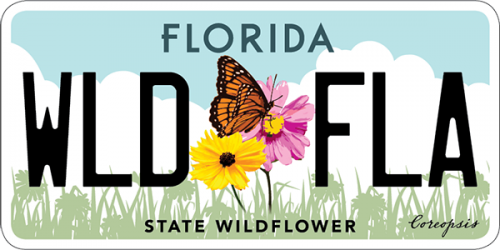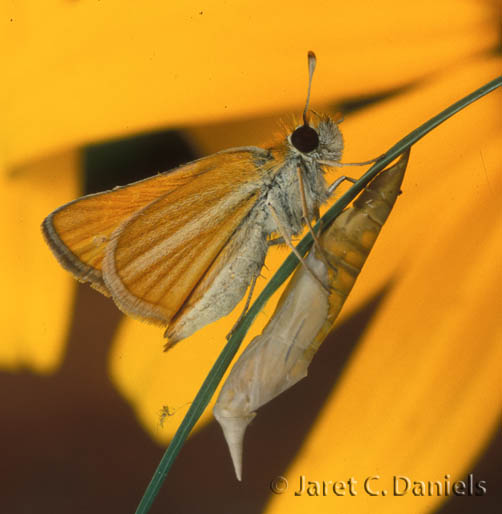- Family name: Hesperiidae/Skippers
- General description: Wings bright orange with narrow black border; forewing elongated. Male with narrow black forewing stigma. Female with black scaling along veins and broader black border. Ventral hindwing orange with narrow white ray through center
- Field Marks: Very small. Forewing elongated, ventral hindwing orange with narrow white ray through center.
- Sexes: Appear similar
- Wingspan: 18-24 mm
- Life Cycle: Egg: White, laid singly on host leaves Mature larva: Whitish-green with darker green dorsal stripe. Head green. Chrysalis: Green with small point off the head.
- Number of Generations: Three or more
- Flight Season: All year
- Abundance: common
- Habitat: Moist meadows, roadsides, disturbed sites, pastures, old fields
- Larval Host Plants: Various grasses (Poaceae) including Bermudagrass (Cynodon dactylon)
- Similar Species:
- Additional Information: Our smallest North American skipper.
- Range in Florida
 The Florida Wildflowers & Butterflies projects at the Florida Museum are sponsored in part by the State of Florida and the Florida Wildflower Foundation, Inc.
The Florida Wildflowers & Butterflies projects at the Florida Museum are sponsored in part by the State of Florida and the Florida Wildflower Foundation, Inc.
